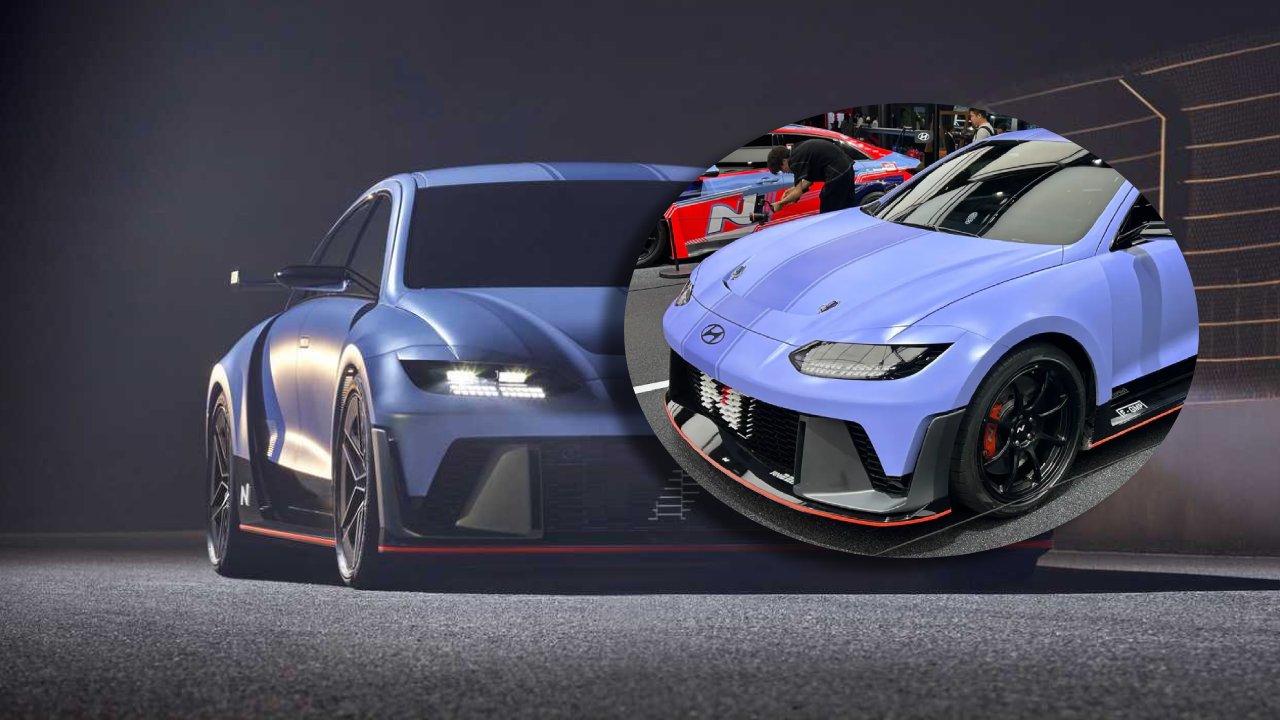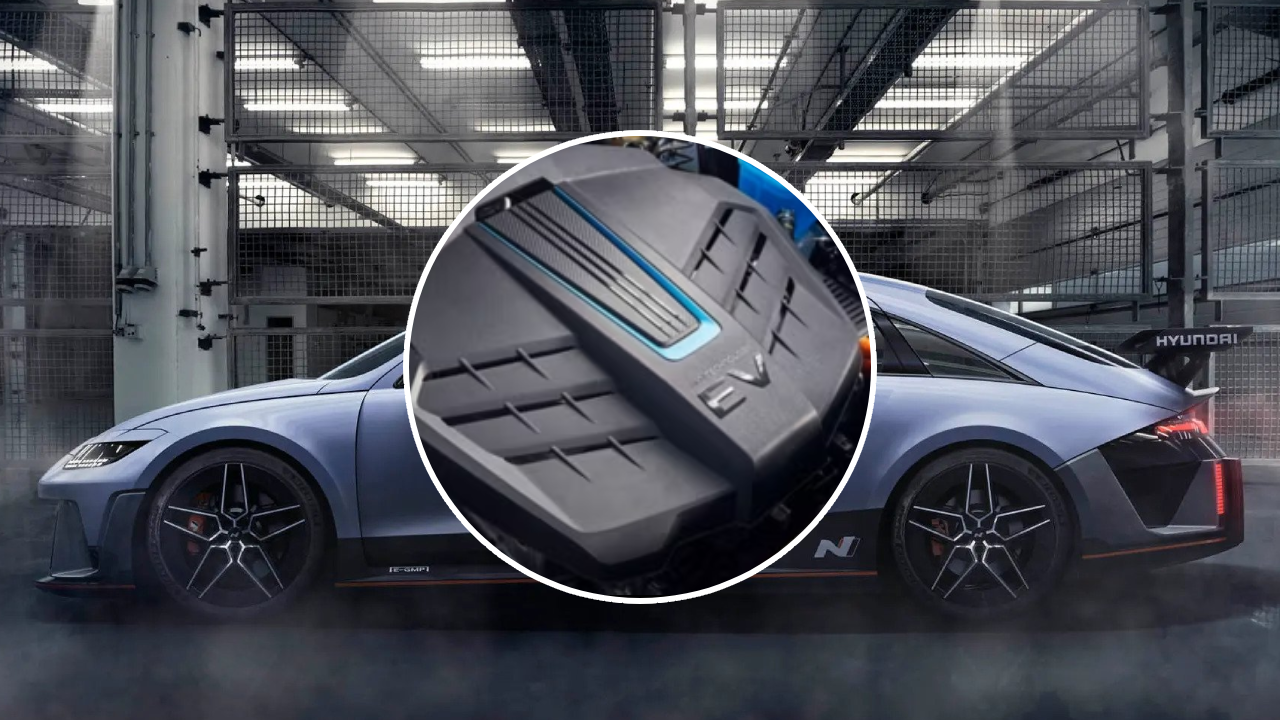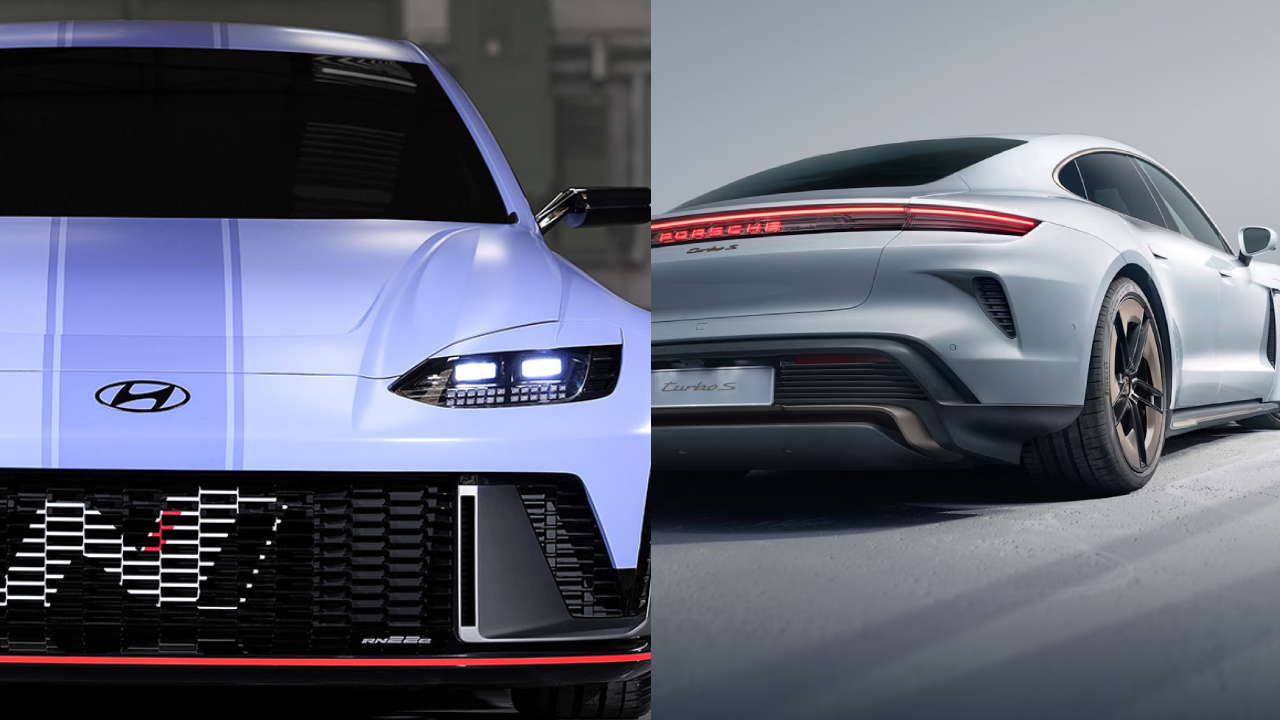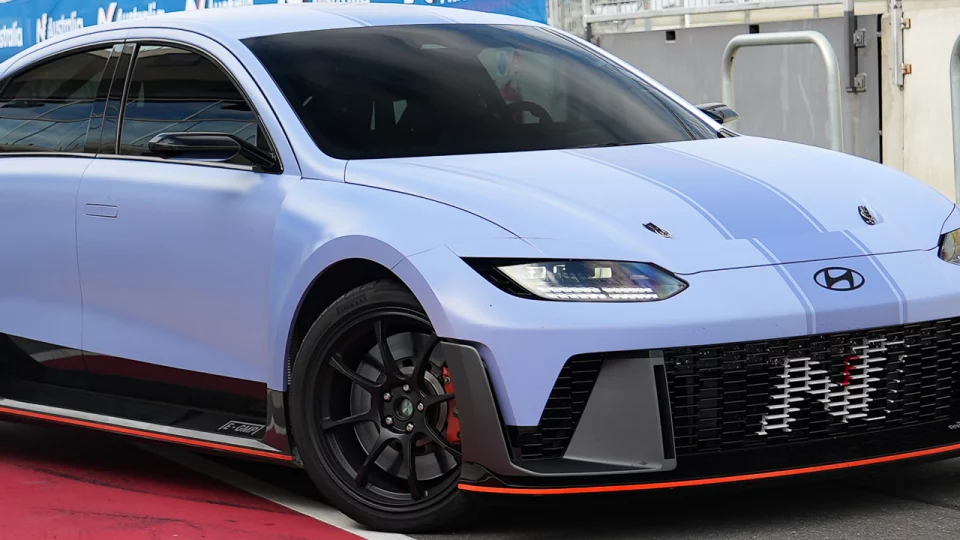Hyundai is no stranger to innovation in the electric vehicle (EV) market, and with the upcoming release of the Ioniq 6 N, the South Korean automaker seems poised to make a significant mark on the high-performance EV segment.
The Ioniq 6 N has drawn comparisons to the Porsche Taycan, a vehicle that sets the benchmark for electric sports sedans. Yet, Hyundai aims to deliver this experience at a more accessible price point. With its futuristic design, advanced technology, and impressive performance capabilities, the Ioniq 6 N could be the budget-friendly alternative to the luxury and power of a Taycan. But how does Hyundai’s contender shape up, and what should we expect from this performance-focused electric sedan?
Table of Contents
The Evolution of Hyundai’s N Line
Hyundai’s N performance division has been steadily building its reputation with high-performance versions of its mainstream models, from the i30 N hot hatch to the more recent Ioniq 5 N. The brand has successfully transitioned from producing economic, everyday cars to crafting models that can rival more established performance brands. The Ioniq 6 N represents the next logical step in Hyundai’s electrification and performance journey.
The standard Ioniq 6, introduced in 2022, is already an attractive proposition for EV buyers, with its sleek design and efficient electric powertrain. However, Hyundai’s N treatment elevates this “electric streamliner” to a whole new level of performance. With spy shots revealing bold design elements such as a large rear wing, 20-inch forged wheels, and red brake calipers, it’s clear that the Ioniq 6 N is gearing up to be more than just a cosmetic upgrade. It’s being fine-tuned for speed, handling, and track-ready performance.
Ioniq 6 N Design and Aerodynamics
One of the most striking features of the Ioniq 6 is its design, which takes inspiration from the streamlined vehicles of the 1930s while incorporating modern elements to maximize aerodynamics. Hyundai has pushed the boundaries of design with the Ioniq 6, and the N version continues this trend with additional performance-oriented modifications. The prototype spotted testing in Europe reveals that Hyundai is focused on optimizing aerodynamics and stability, especially at high speeds.

The Ioniq 6 N’s wider track, large rear spoiler, and low-slung stance suggest it will prioritize downforce and stability, essential elements for a high-performance EV. While Hyundai has been careful not to reveal too much ahead of its official debut, the prototype’s aggressive styling indicates that the Ioniq 6 N will turn heads on both the road and the track.
Ioniq 6 N Powertrain and Performance
The heart of the Ioniq 6 N lies in its powertrain, which is expected to borrow heavily from the Ioniq 5 N. Hyundai’s E-GMP platform, which underpins both models, has already proven itself to be highly adaptable, capable of supporting a wide range of electric powertrains. For the Ioniq 6 N, Hyundai will likely use a dual-motor all-wheel-drive setup, similar to the Ioniq 5 N, but with the potential for even more performance.
In the Ioniq 5 N, this setup produces 448kW (600 horsepower) of power and 740Nm (545 lb-ft) of torque. When the N Grin Boost mode is activated, those numbers increase to 478kW (641 horsepower) and 770Nm (568 lb-ft). Given the Ioniq 6’s sleeker, more aerodynamic body, it’s possible that the Ioniq 6 N will surpass its sibling in terms of performance, potentially offering quicker acceleration and a higher top speed. The Ioniq 5 N can sprint from 0-100km/h in 3.5 seconds, or 3.4 seconds with Grin Boost engaged, and reaches a top speed of 260km/h (162 mph). The Ioniq 6 N could shave a few tenths off those times while pushing its top speed further.

Ioniq 6 N Range and Battery Life
Range anxiety remains one of the key concerns for potential EV buyers, especially when considering high-performance models that often sacrifice efficiency for speed. However, Hyundai has managed to strike a balance between performance and practicality with its N models. The Ioniq 5 N’s 84kWh lithium-ion battery provides a WLTP (Worldwide Harmonized Light Vehicles Test Procedure) range of 448 kilometers (278 miles), a respectable figure for a vehicle of its class.
Given the more streamlined, aerodynamic design of the Ioniq 6, it’s possible that the N version will offer an even better range, potentially pushing past the 450-kilometer (280-mile) mark. Hyundai will likely use a similar battery setup, although advancements in energy management and aerodynamics could result in improved efficiency for the Ioniq 6 N. This would give the model a competitive edge over rivals like the Porsche Taycan, which offers a range of up to 412 kilometers (256 miles) depending on the configuration.
Advanced Driving Features and Technology
Hyundai has proven that performance EVs can offer more than just raw power and speed. With the Ioniq 5 N, the brand introduced a suite of advanced driving features designed to enhance driver engagement and track performance. Many of these features are expected to make their way to the Ioniq 6 N as well.
One of the standout features is the N Torque Distribution system, which allows drivers to configure the car’s torque split between the front and rear wheels. In its most aggressive setting, the Ioniq 5 N can send 100 percent of its torque to the rear wheels, offering a more traditional rear-wheel-drive experience that’s perfect for track days. The Ioniq 6 N is likely to benefit from this system, giving drivers more control over the vehicle’s handling characteristics.
Another notable feature is N Pedal, Hyundai’s regenerative braking system optimized for performance driving. This system allows the driver to adjust the level of regenerative braking, with a focus on improving lap times and cornering performance. Combined with paddle shifters that simulate gear changes, the Ioniq 6 N will offer a more engaging driving experience than many other EVs in its class.
Hyundai has also included a drift mode, called N Drift Optimizer, which makes it easier for drivers to initiate and maintain controlled drifts. This feature, along with simulated engine and exhaust sounds, adds an extra layer of excitement to the driving experience, ensuring that the Ioniq 6 N delivers more than just straight-line speed.
Comparing the Ioniq 6 N to the Porsche Taycan

The Porsche Taycan has long been the benchmark for performance EVs, offering a blend of luxury, speed, and cutting-edge technology. However, it comes with a premium price tag that puts it out of reach for many buyers. This is where the Hyundai Ioniq 6 N has a significant advantage.
While Hyundai has not yet announced pricing for the Ioniq 6 N, it’s expected to be far more affordable than the Taycan, which starts at around $86,700 in the U.S. market. Hyundai has a history of offering its performance models at competitive prices, and the Ioniq 6 N is likely to follow suit, offering Taycan-level performance at a fraction of the cost.
That said, the Taycan still holds an edge in terms of luxury and brand prestige. Porsche’s attention to detail and craftsmanship are second to none, and its extensive customization options allow buyers to tailor their vehicle to their exact specifications. The Taycan also offers a broader range of powertrain options, from the entry-level Taycan to the top-of-the-line Taycan Turbo S, which boasts a staggering 560kW (750 horsepower) and a 0-100km/h time of just 2.6 seconds.
However, for buyers who are more focused on performance and value, the Ioniq 6 N could be the perfect alternative. It may not have the same badge appeal as the Porsche, but it offers comparable speed, advanced technology, and an engaging driving experience at a much more accessible price point.
